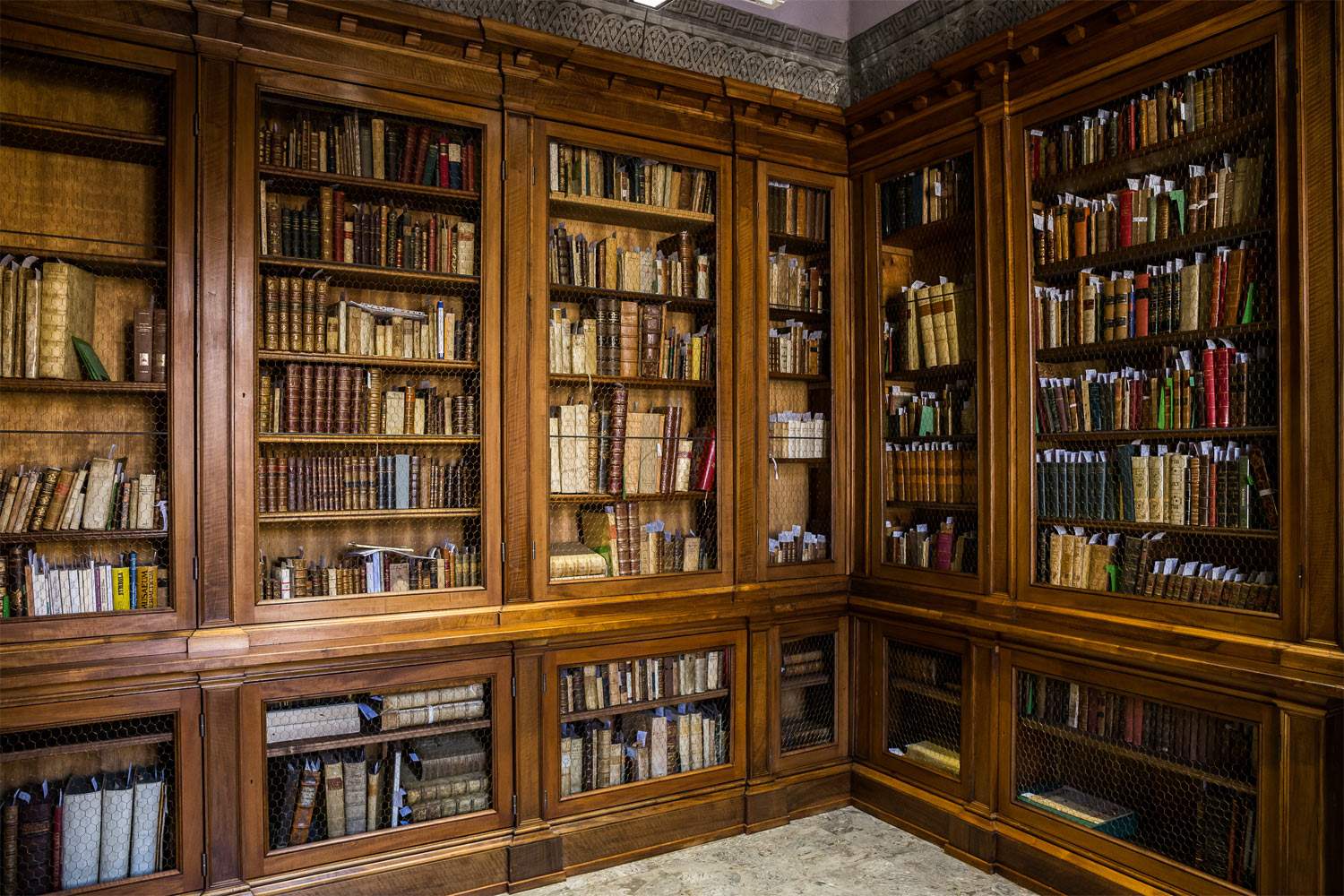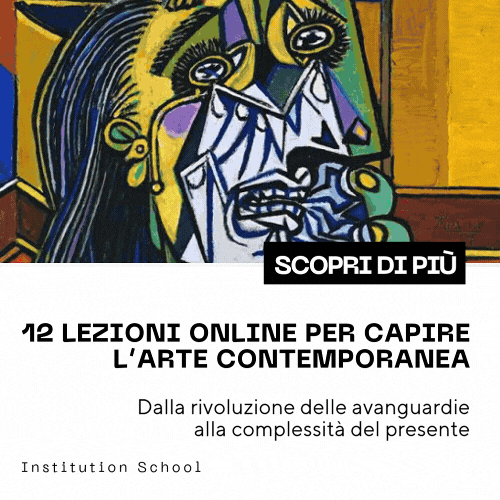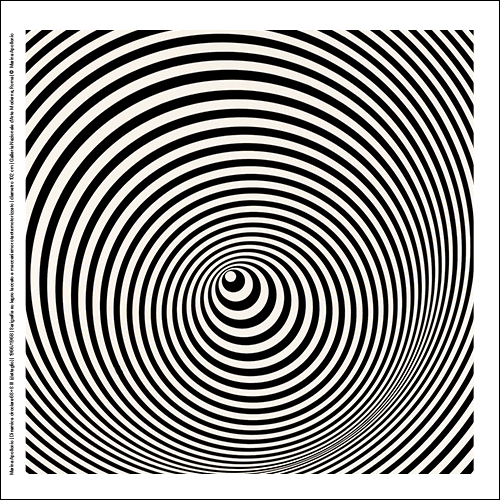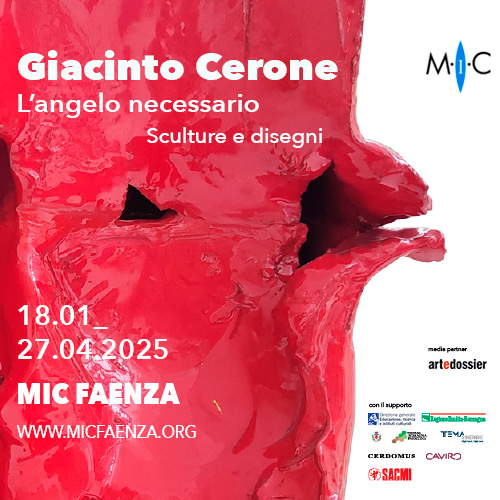Milan, Umberto Eco's antique books on display at the Braidense. Also recreated is his Studiolo
From May 5 to July 2, 2022, the Braidense Library in Milan presents the exhibition L’idea della biblioteca. Umberto Eco’s collection of ancient books at the Braidense National Library, which will display for the first time to the public a selection of Umberto Eco’s ancient volumes, acquired by the Ministry of Culture from the Eco family in 2018. At the same time, the Library will inaugurate the “Studiolo,” a space available to scholars, where all 1,300 rare titles, including 36 incunabula, books printed before 1500, from the “Bibliotheca semiologica, curiosa, lunatica, magica et pneumatica,” as Eco called it, will be preserved. The “Studiolo” preserves as much as possible the placement of the books that Umberto Eco had ordered in his house overlooking the Castello Sforzesco in Milan. The exhibition intends to celebrate the very important acquisition of Umberto Eco’s ancient volumes by the Braidense, which is realized today by complementing the library’s existing collections, starting with those concerning works from the 15th and 16th centuries. Also in keeping with the wishes of Umberto Eco and his family, his vast collection of more than 35,000 modern books and the archive will be on loan for use by the University of Bologna.
The exhibition The Idea of the Library. Umberto Eco’s Collection of Old Books at the Braidense National Library benefits from the scientific curatorship of James Bradburne and specialists from the International Center for Humanistic Studies “Umberto Eco” in Bologna, Riccardo Fedriga, Anna Maria Lorusso, and Costantino Marmo of the University of Bologna and Valentina Pisanty of the University of Bergamo. The exhibition displays 82 volumes, including 62 from the Umberto Eco Book Fund, 19 from the Biblioteca Braidense collection, and 1 from The Warburg Institute. Each display case investigates an aspect of Umberto Eco’s intense relationship with old and rare books. As a sign of Eco’s global importance, and of the intellectual debt he owed to the international community, exceptionally the exhibition includes important loans from the Warburg Institute in London and curated by its director, Bill Sherman.
The exhibition opens with two display cases dedicated precisely to the Warburg Institute: Umberto Eco shared with Aby Warburg, historian of art and the Italian Renaissance (1866 - 1929), a passion for libraries and the principle of the law of the good neighbor, according to which the book we need is usually next to the one we are looking for. Echo, like Warburg, organized his shelves so that each book had its most fruitful neighbors next to it and a space of thought, imagination and endless cross-references could be created. Eco’s collecting appetite, as well as his interest in the material culture of the late Renaissance is represented by the display case Changing The Landscape Of Modern Thought. Continuing along the path, each display case bears the name of a great masterpiece by Umberto Eco: from The Name of the Rose to The History of Legendary Lands and Places via The Foucault Pendulum, The Search for the Perfect Language in European Culture, The Island of the Day Before, Baudolino, The Mysterious Flame Of Queen Loana, The Prague Cemetery, The History of Beauty and The History of Ugliness.
Beginning with The Name of the Rose, a novel born almost as a joke for a few friends that turns out to be a large puzzle of references to medieval works and objects, each book is a treasure trove of quotations that draw on the past and connections to ancient texts. Among those in the exhibition TheAtalanta Fugiens, by Michael Maier, one of the many symbolic texts printed by Oppenheim’s De Bry presses that largely defined the occult world of the late Renaissance court, combining Neoplatonism, Kabbalah, Hermeticism and alchemy, the Etymologies of Isidore of Seville, along with the series of the famous alchemist and esotericist, Athanasius Kircher, the book of Ketham, Andreae’s Chymische Hochzeit, Giordano Bruno’s De Umbris Idearum, The City of the Sun by Campanella, John Dee’s Monas Hieroglyphica. The themes and cross-references in the exhibition thus cover the constant interests of Umberto Eco’s intellectual adventure. Finally, in the section devoted to the volume History of Legendary Lands and Places, we understand how imagination is a fundamental operation for understanding cultural history. Connected to this Eco introduces one of the most interesting forms of cataloguing for him, that of the list: lists of things and places give a sense of wonder, of the infinity and to the non-orderability of the world.
“From the beginning we wanted the collection of ’ancients’ to be housed at the Braidense National Library, a place open to the public in the city where Umberto Eco lived and worked until the 1950s,” say Renate, Carlotta and Stefano Eco.
“I met with Umberto Eco in November 2015 to discuss the possibility of writing the first author captions at Brera,” says James M. Bradburne, director of the Pinacoteca di Brera and the Braidense Library. “He backed out, as he was very tired, but with a promise to do it as soon as he felt up to it. Umberto Eco died only a few weeks later, on February 19, 2016. In that same year I spoke with Renate about the possibility of placing Umberto’s old books in the Braidense Library. Today this is possible and we are delighted to have realized this exhibition, which coincides with the realization of the Studiolo that we intentionally designed next to the Sala Manzoniana.”
Some relevant incunabula such as the De Civitate Dei (1470) and theHypnerotomachia Poliphili (1499) are present in the collection of ancients, but also works of great suggestion and sinister content, such as the Malleus maleficarum (1492), and then again the Corpus Hermeticum of Hermes Trismegistus, of which Echo possesses the third edition of the Latin version printed in Venice in 1481 and a series of editions from the 16th century; the Polygraphiae libri sex of Trithemius (1518); Giordano Bruno’s De umbris idearum (1582); works printed by the early Rosicrucians, such as Allgemeine und General Reformation (1681) and Chymische Hochzeit (1616); writings by alchemist Michael Maier and naturalist philosopher Robert Fludd(Utriusque Cosmi Historia, 1617); Heinrich Khunrath’s Amphiteatrum Sapientiae Aeternae (2nd ed. 1609) and almost all the works of the erudite Athanasius Kircher.
The studiolo
More than 30 years ago Umberto Eco decided to change his family home in Milan, to find one large enough to hold all his books. With his wife Renate he found a large, ring-shaped apartment, in whose corridors from the specially reinforced floor the bookshelves would be mounted without danger of collapse. At the beginning of the long corridor leading to his study, a room with a small balcony and a beautiful view of the Castello Sforzesco was made, to be devoted to his growing collection of valuable books. From that moment that became the “Room of the Ancients,” whose contents from May 5, 2022 will be housed in the “Studiolo Umberto Eco” of the Braidense National Library in Milan, which resembles the original space in size and atmosphere.
“The room of the ancients was from the beginning Umberto’s refuge, with no telephone, no computer, with sheet music and his flutes, which he played almost every day,” Renate, Carlotta and Stefano Eco recount. “Umberto was proud of the rarity of many of his purchases, and showed them to family members and the few friends allowed in the room with the pride and smile of the passionate collector. To his grandchildren he would show with amusement the animals, monsters and creatures from the books of Aldrovandi and Kircher, to others even Meyer’s colored Atalanta fugiens, or the splendid composition of the pages of the Hypnerotomachia Poliphili, printed by Aldo Manuzio in 1499.”
“The Studiolo recreated today in the rooms of the Braidense National Library is much more than a tribute to an extraordinary cultural icon of the 20th century,” says Marzia Pontone, director of the Braidense Library. “It is the place where the evocative and valuable ”Bibliotheca semiologica curiosa, lunatica, magica et pneumatica“ put together by Umberto Eco with bibliophile passion over many years will find a home for future generations. Above all, it will be a space in the city open to study and research, in close synergy with the academic contexts in which Eco himself taught for decades. A generative space of culture, which does not forget the past, but looks to the future.”
In order to “access” and learn about the Studiolo (otherwise open only for study and research purposes), extra video content will be available on BreraPlus, Brera’s digital channel, by the end of May. A plural narrative where the images of the Studiolo and the exhibition will alternate with the voices of the people closest to the figure of Umberto Eco, creating a narrative that through the digital dimension will enrich the perception of the very important acquisition of the Braidense.
Umberto Eco’s ancient book collection and cataloging at the Braidense.
Over the centuries the Braidense National Library has acquired many private collections, the most important being the entire collection of Alessandro Manzoni’s autograph manuscripts, donated by the family in 1886, 100 years after the library opened to the public. Umberto Eco’s collection of old books arrived in Braidense in August 2021, thanks to the Ministry of Culture’s acquisition from the Eco family in 2018 and the interest of Director General James M. Bradburne. The volumes were moved from the Eco family home in Milan with meticulous attention to the arrangement of the books in the boxes, with the aim of maintaining the same order in which they were placed on the shelves of the library and in the Eco Studiolo. The first operation carried out was to extract the 1328 volumes from the 73 boxes that arrived in Braidense and place them in the prepared shelves taking into account the predetermined order. Each book was then marked with a location that respected the order in which the volumes were arranged in the author’s home.
The name given was ECO and the sequential number identified its position on the shelf. Different sections were created. The section ECO.01. identifies the books placed on the shelves of his library; ECO.02. identifies the books placed in the Studiolo, for example on the desk; ECO.03. identifies the most valuable books in the collection. It was also planned to create the location ECO.04. where to place the author’s publications in order to provide working and research tools in one space. Subsequently, computerized cataloging began, which enables scholars to get acquainted with the preserved material through the library’s OPAC, to have directions for requesting it for reading, and where to consult it. Each work present is described individually indicating author, title, place, publisher, date of publication, physical description of the work, and location assigned by the library.
It was decided that all typescript and manuscript folios that were within the volumes, such as purchase notes or editorial notices would remain within them, so as to preserve in the collection evidence of the thoughts and interests of those who created and owned it. The volumes that make up personal libraries are usually rich in paratextual elements that express the thoughts of the possessor of the collection, in this case the collector, and in fact Eco’s collection also contains the deeds of purchase of the individual volume. The scholar who approaches these texts will also have the opportunity to find on the title page and on the guard papers of some works stamps, handwritten notes and/or ex libris of owners or possessors who predate Eco. The volumes that become part of these libraries thus become unique specimens, uniqueness meaning the presence of written and unwritten information within the pages of the books. The cataloging sheets edited by Umberto Eco will also be made available to scholars after their arrangement, allowing a more accurate analysis of the collection itself. The different stages of the arrangement and cataloging of Umberto Eco’s collection of old books were coordinated by Braidense librarians Cecilia Angeletti and Marina Zetti with the collaboration of Sergio Gatti and Vito Cannillo (moving works from Eco’s home), Flora Bonalumi and Matteo Vacchini (volume placement and material cataloging).
Pictured: the Studiolo
 |
| Milan, Umberto Eco's antique books on display at the Braidense. Also recreated is his Studiolo |
Warning: the translation into English of the original Italian article was created using automatic tools. We undertake to review all articles, but we do not guarantee the total absence of inaccuracies in the translation due to the program. You can find the original by clicking on the ITA button. If you find any mistake,please contact us.





























